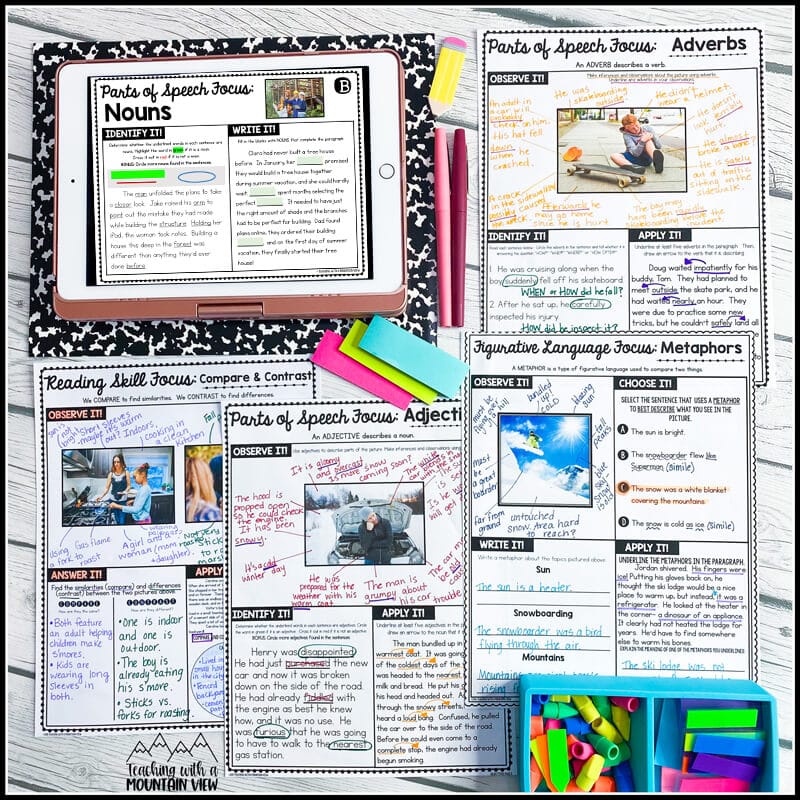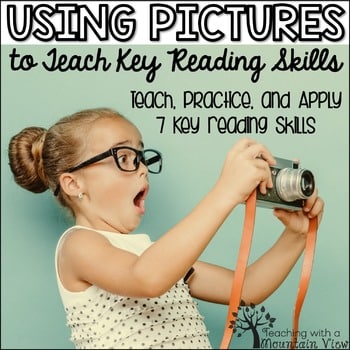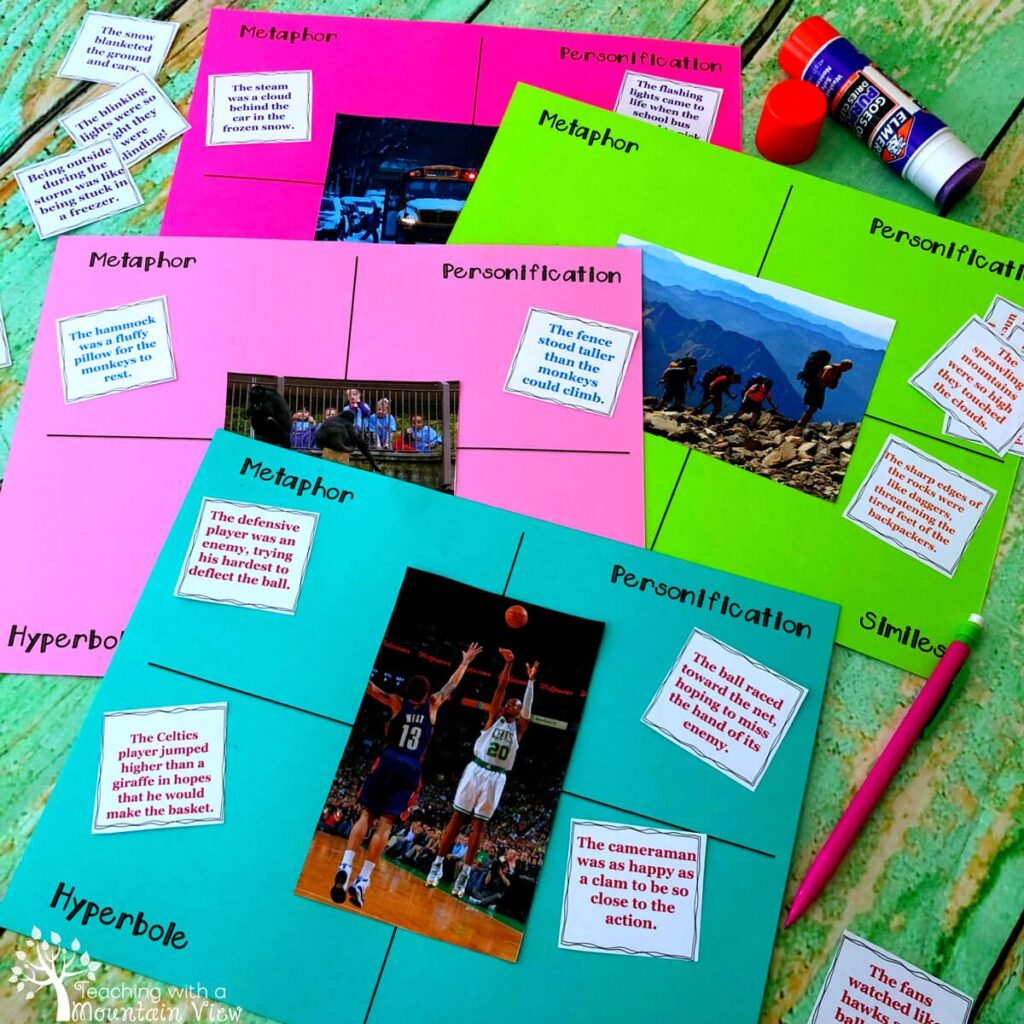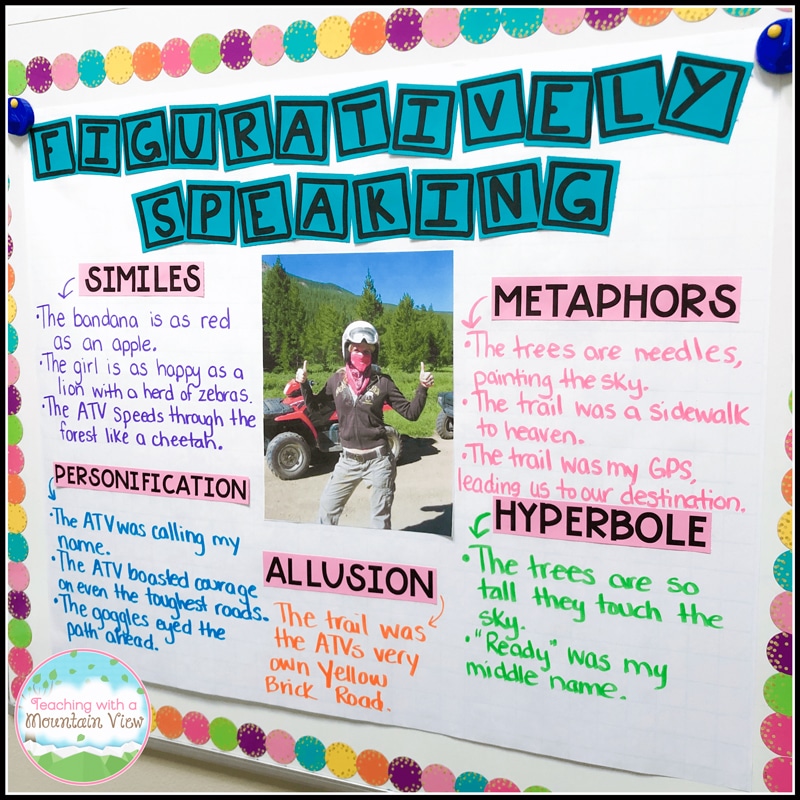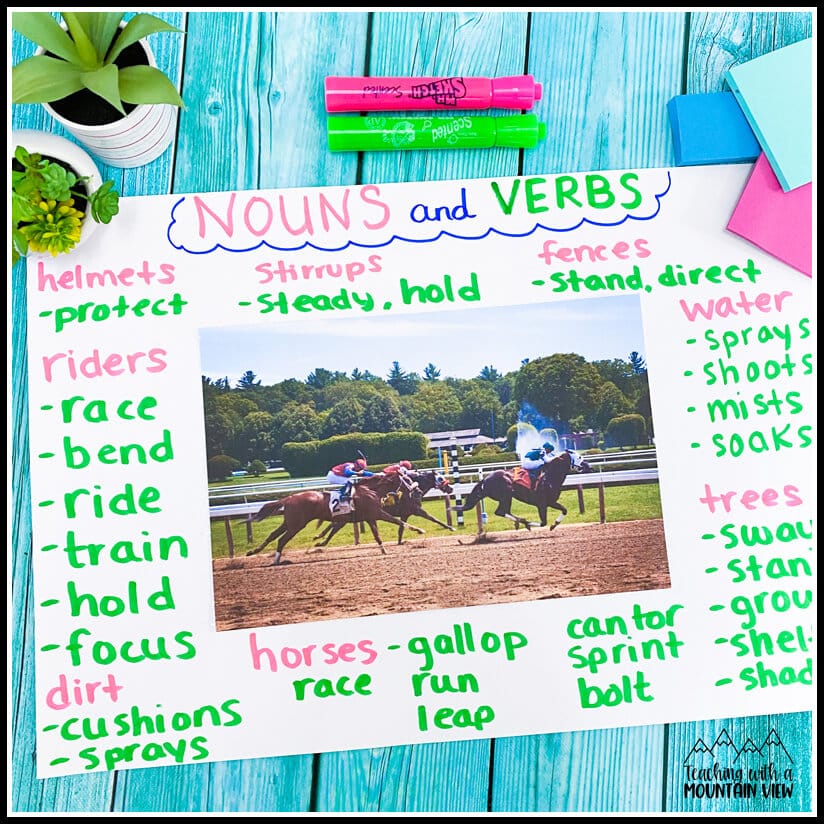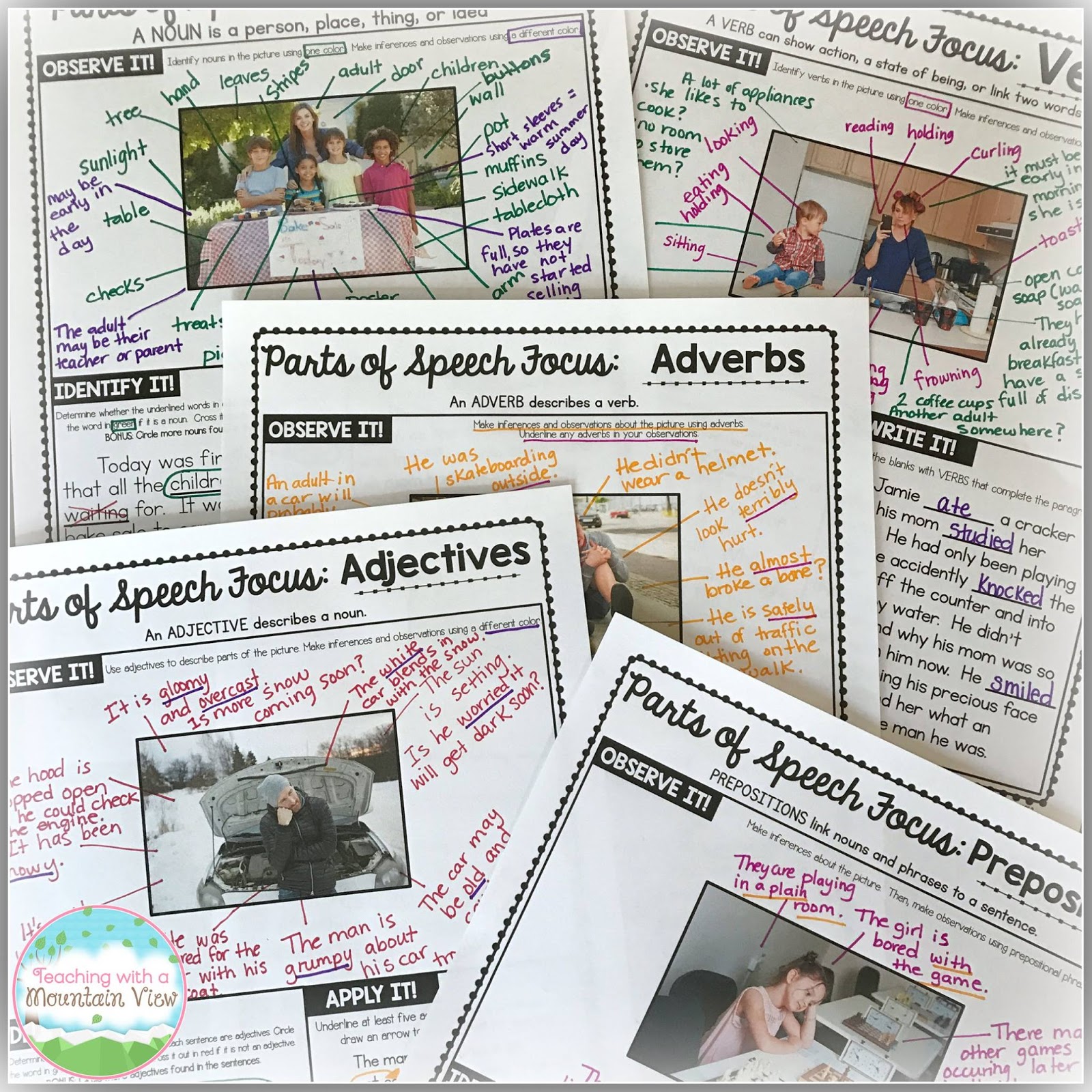Using Pictures to Teach Reading and Writing Skills
By Mary Montero
Share This Post:
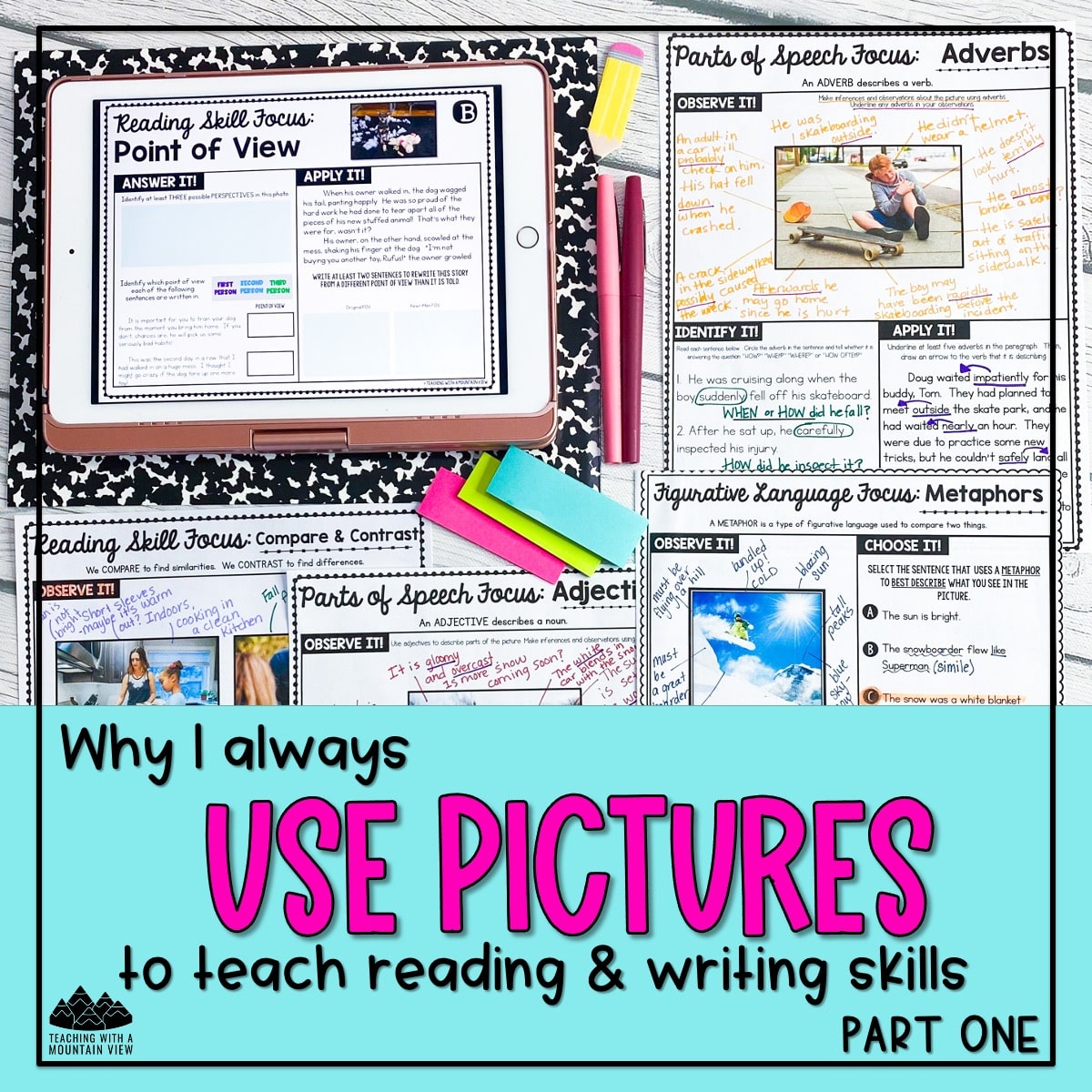
For years, I have witnessed, over and over again, the value of using pictures to teach reading skills in my classroom. I always use them to introduce reading skills like inference, story elements, cause and effect, compare and contrast, etc. I have blogged about it extensively, and you can read more blog posts with examples of how I use them in my room HERE.
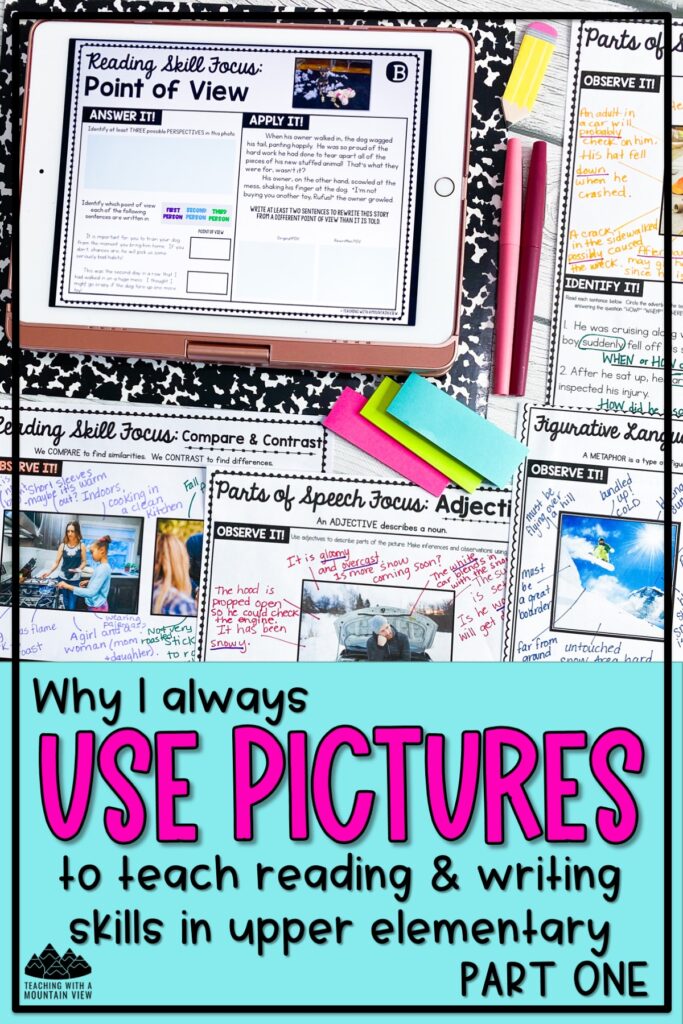
This summer, I thought a lot how I could take this even further in my classroom. I had always used pictures as a guided introduction to the skill or whole group practice, or by using task cards in centers or small groups. Both of these were (and are still) great, but I wanted to have an option for independent work, assessment, homework, etc. that would continue to strengthen their skills.
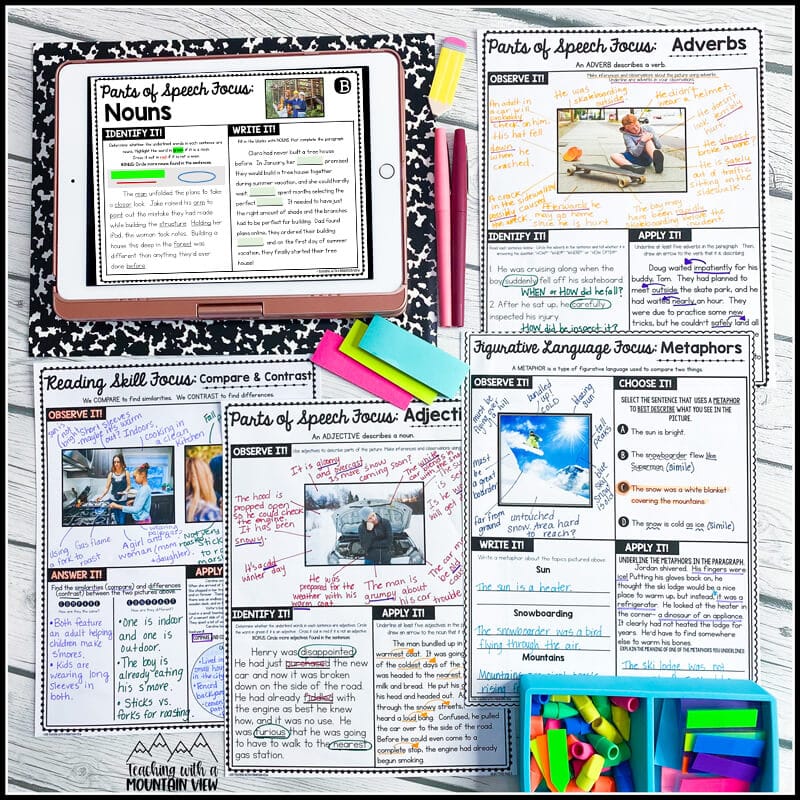
That’s when this little gem was born… I decided to take what I’ve been sharing for years and create a new line of resources: Using Pictures to Teach™.
Using Pictures for Reading Skills Bundle
Are you reading to take your skill-based reading comprehension instruction to the next level? Using Pictures to Teach and Review Reading Skills is a well-loved, teacher-approved method that has become a staple in classrooms across the globe. This huge, discounted bundle includes 90 pages to teach, review, and apply reading and writing skills!
Why Using Pictures to Teach Works
I created each section of this document with a specific purpose in mind. I wanted the students to use the pictures in a variety of ways while still practicing the specific focus reading skill. They have the opportunity to observe a picture and make inferences, ask questions, make predictions, etc., practice a reading skill based on the picture, and apply the reading skill to a short passage.
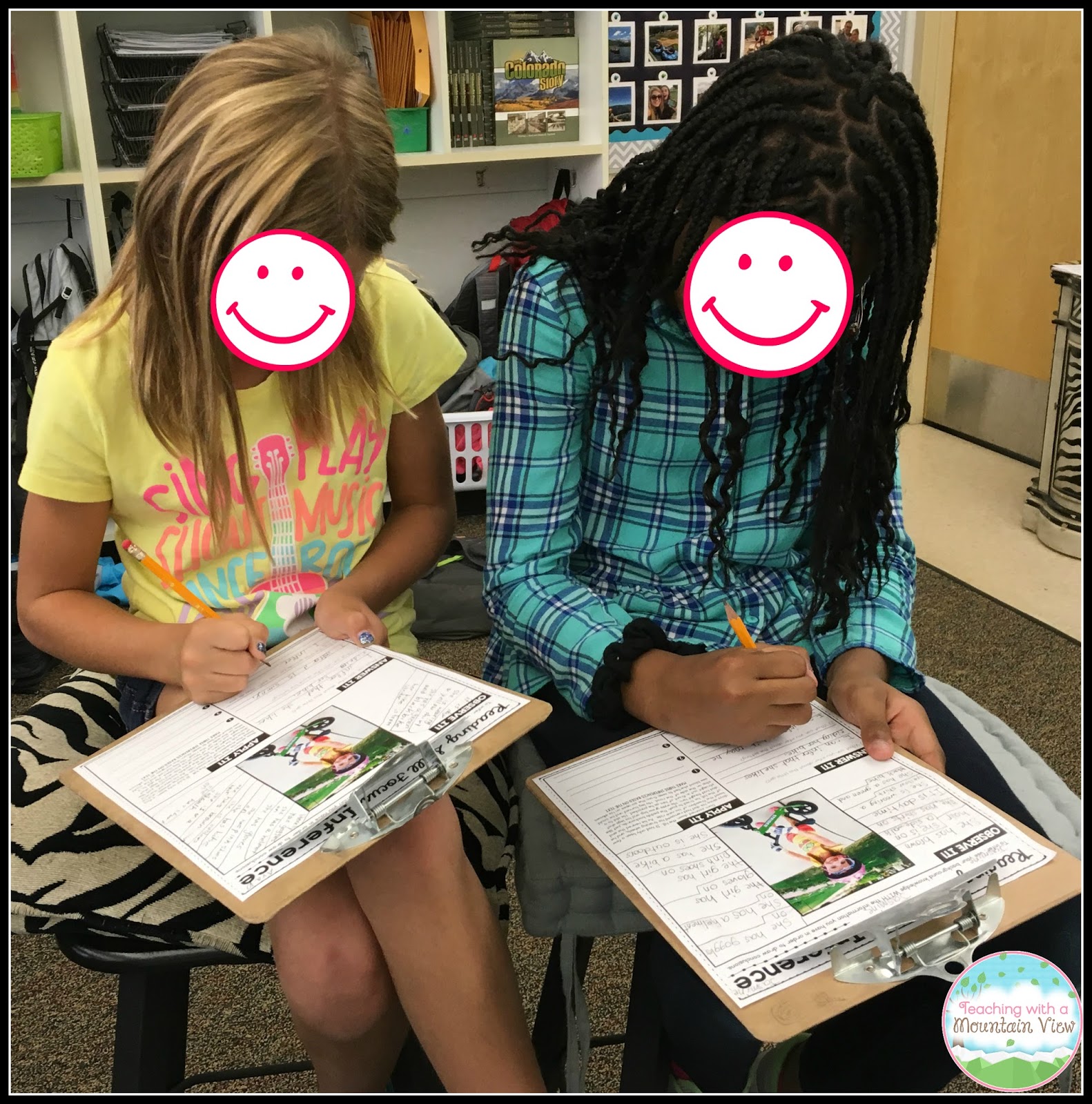
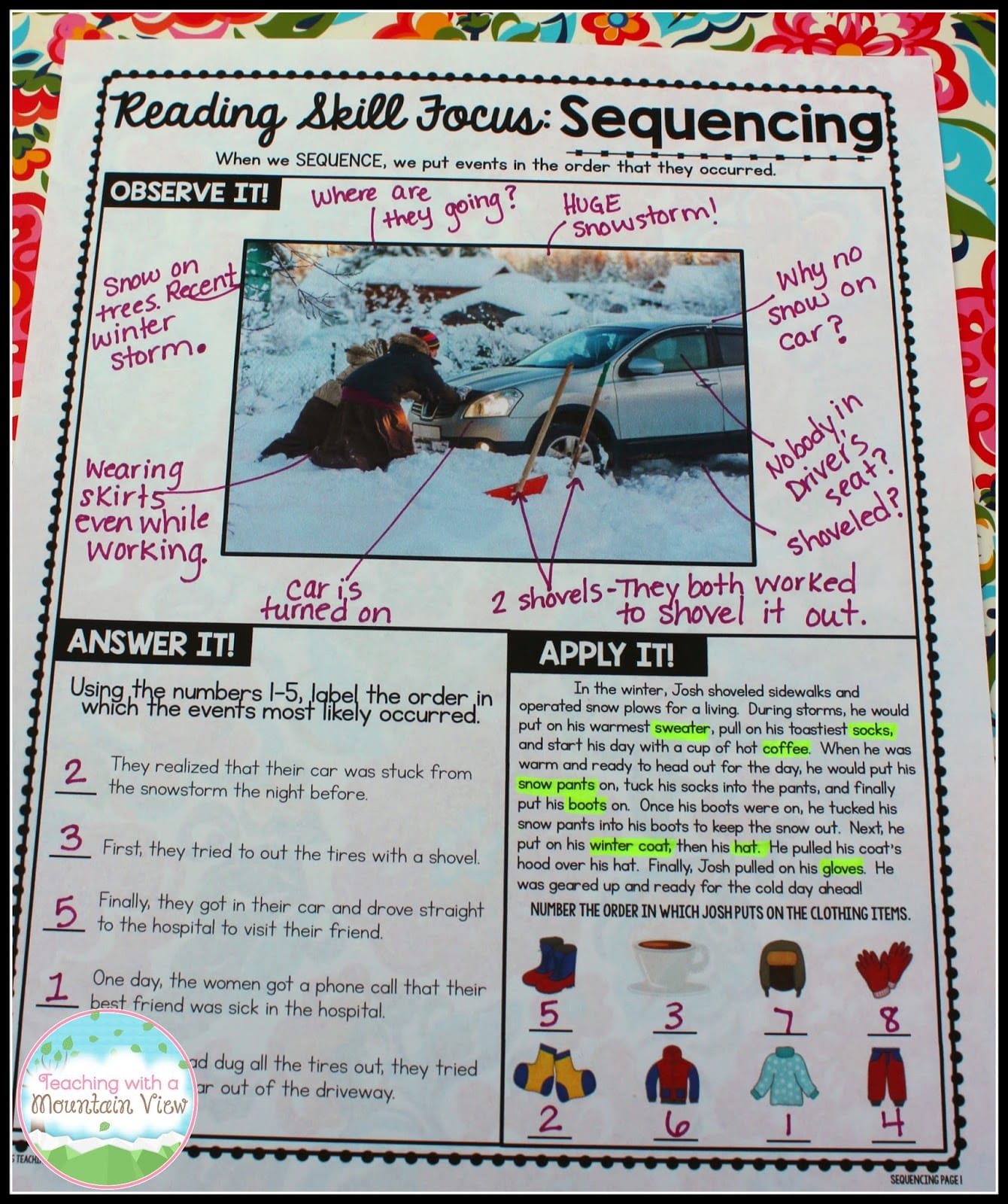
There are three components to EACH page of this resource:
Observe It: This section includes the picture with plenty of white space around it. The white space is for students to make literal AND inferential observations. Take as many notes as you can, encourage students to stretch their thinking, and watch their inference skills grow with EVERY picture you observe! Examples of observations are included.
Answer It: This section has a task to complete that focuses on the reading skill AND relates to the picture in the “observe it” section.
Apply It: This section has a short story that loosely relates to the same topic shown in the picture (but does NOT represent the picture) and includes a task that relates to the reading skill focus.
Every time I introduce a new skill, I use one of the pages whole class (the inference and sequencing examples above came from a whole class lesson), and then I have them work on one with a partner. Eventually, they take a page home for homework or do one independently in centers or as an assessment. I know it sounds silly, but these pages have TRULY changed my classroom for the better. Why?

Students are now better able to concretely understand these reading skills.
The pictures make the skills real life, so they are able to make connections outside of the classroom, outside of the reading skill itself. They look at things a bit differently now, and instead of memorizing how sequencing or cause and effect or compare and contrast relate to reading, they know how it relates to the real world, so it becomes second nature for them when they are asked to do it when reading. They are constantly making these observations through the pictures, so they just KNOW how to do it intuitively. This type of initial practice takes the pressure off of the reading portion so that they can be successful with the skill first before diving into the “nitty gritty.”
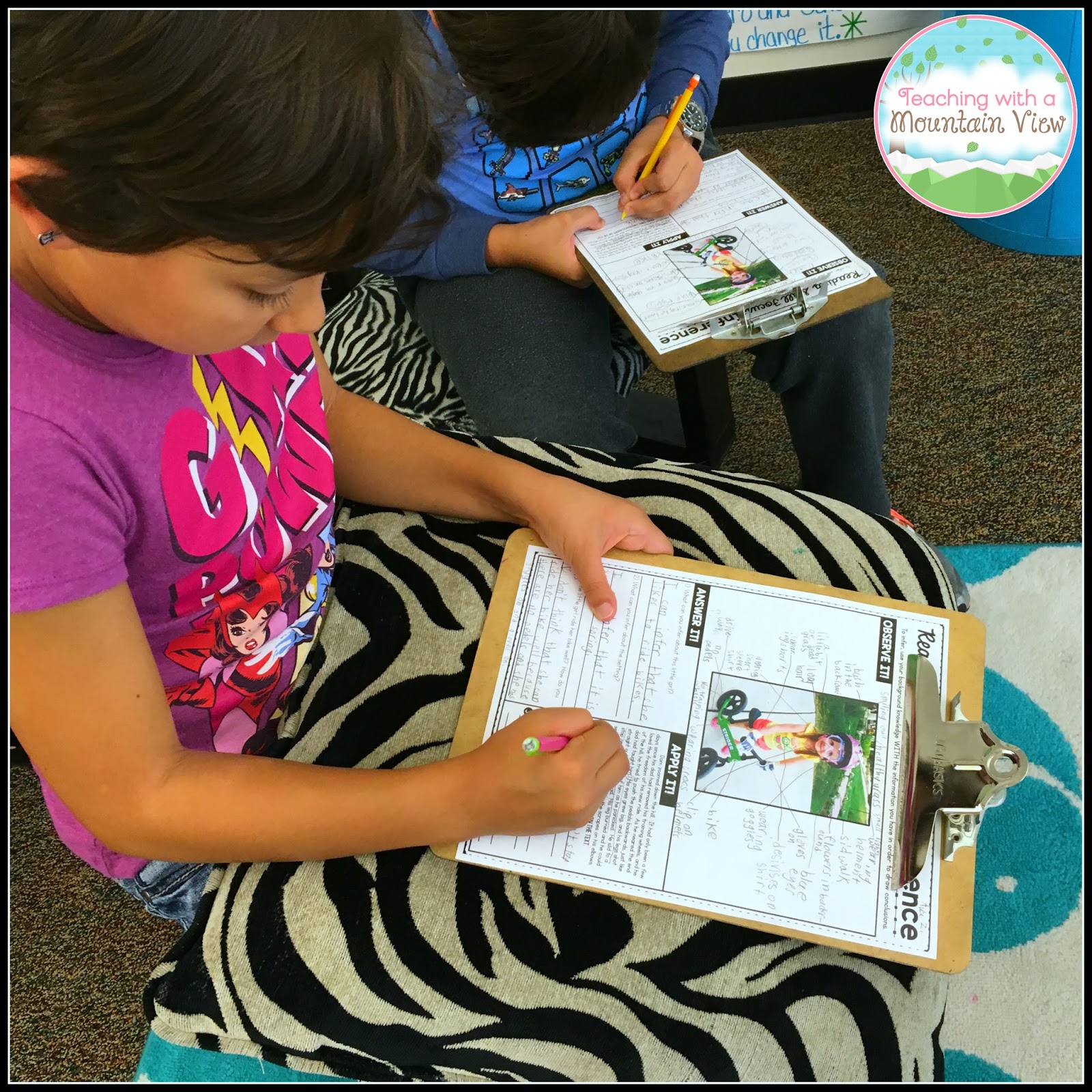
You can purchase this pack of reading skills pages at my TpT store by clicking the image below. It includes 7 key reading skills with 5 pages of practice for each skill.
Using Pictures to Teach Figurative Language
After using these for several months this year and just loving them (both me AND my students), I decided to create a new set as I started teaching figurative language! Again, I had always used pictures to teach figurative language… You can click each picture below to read more about how I have used pictures to teach figurative language!
I followed almost the same basic format for this set of printables, but left less white space for observing and added a new multiple choice section to add a little extra challenge.
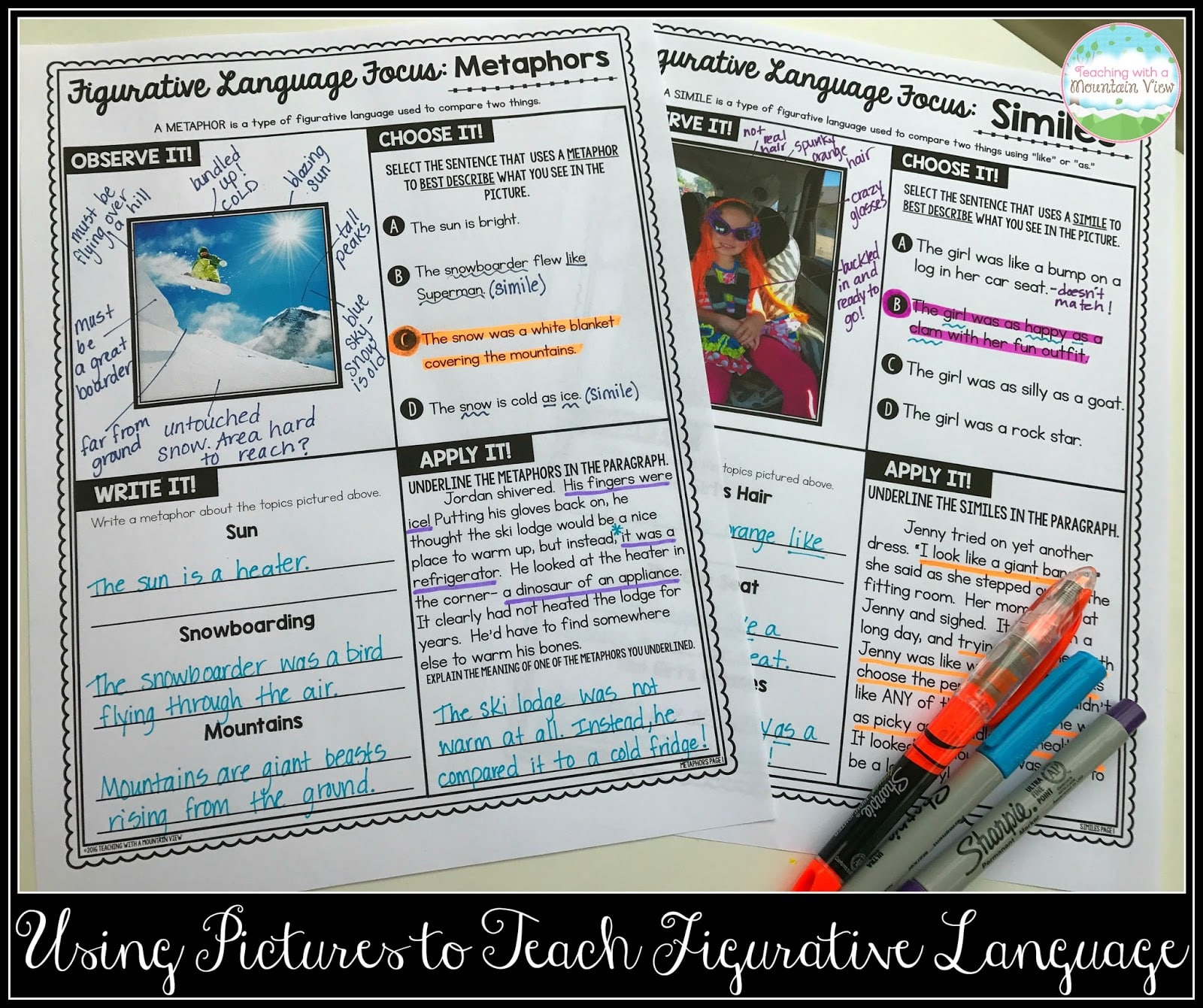
Here are two examples of pages I’ve done with students as a guide, one with metaphors, and one with similes. They still make their observations, but then they have to identify and write similes and metaphors of their own. They LOVE these, too!
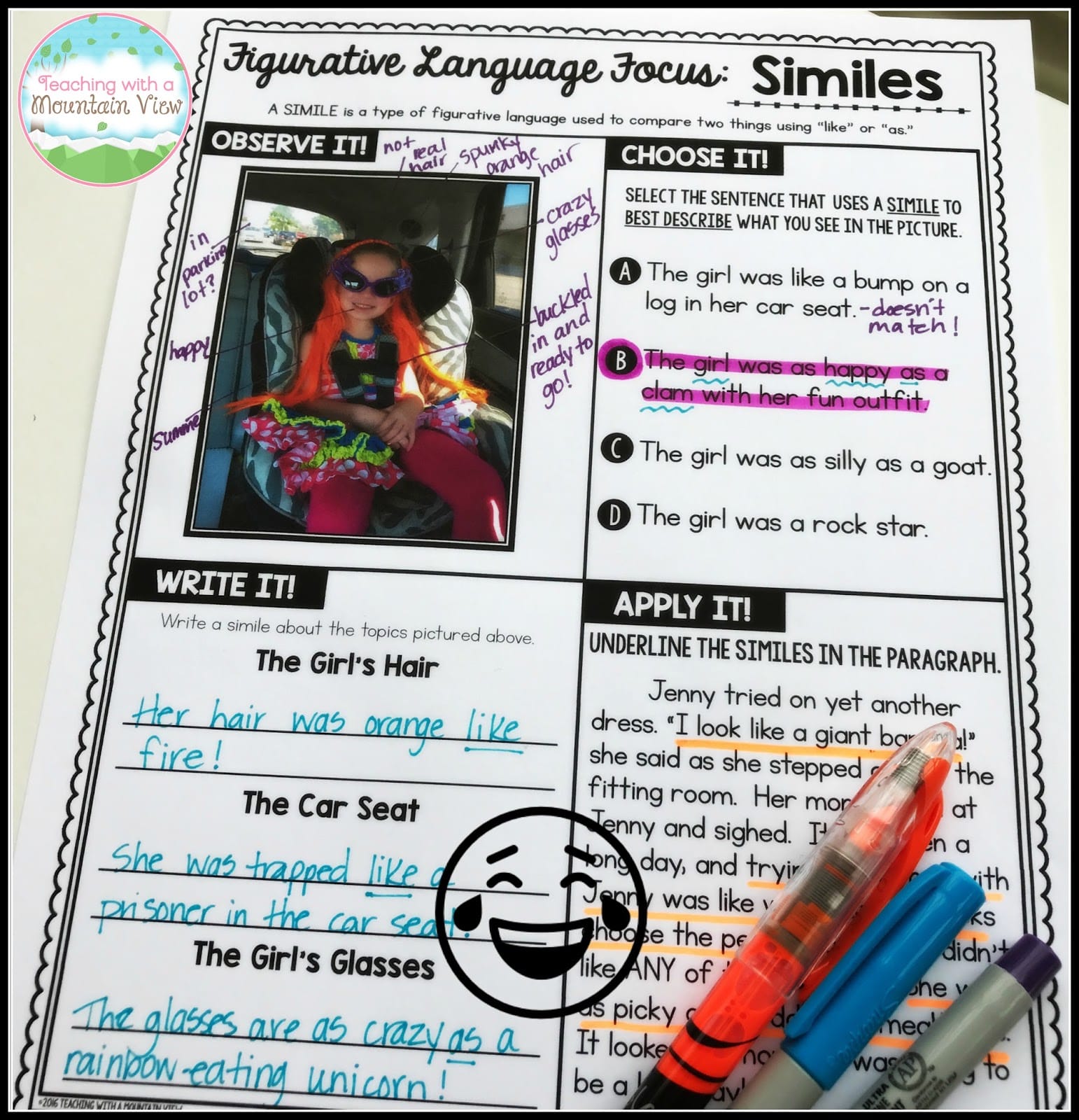
This one always makes me laugh. Coming up with their own figurative language is always the hardest part for students, and the one they came up with to describe the girl’s glasses is so silly. 🙂
You can purchase this pack of figurative language printables at my TpT store by clicking the image below.
Using Pictures to Teach Parts of Speech
One more update! After seeing such phenomenal results with my students this year, I created another set to teach and review parts of speech. I have used pictures to review parts of speech for years and have blogged about it before on THIS post!
This new Using Pictures to Teach Parts of Speech set includes a review of nouns, verbs, adverbs, adjectives, and prepositions. It is one of my favorite creations to date and can span the entire year! You can purchase it resource HERE.
Mary Montero
I’m so glad you are here. I’m a current gifted and talented teacher in a small town in Colorado, and I’ve been in education since 2009. My passion (other than my family and cookies) is for making teachers’ lives easier and classrooms more engaging.







